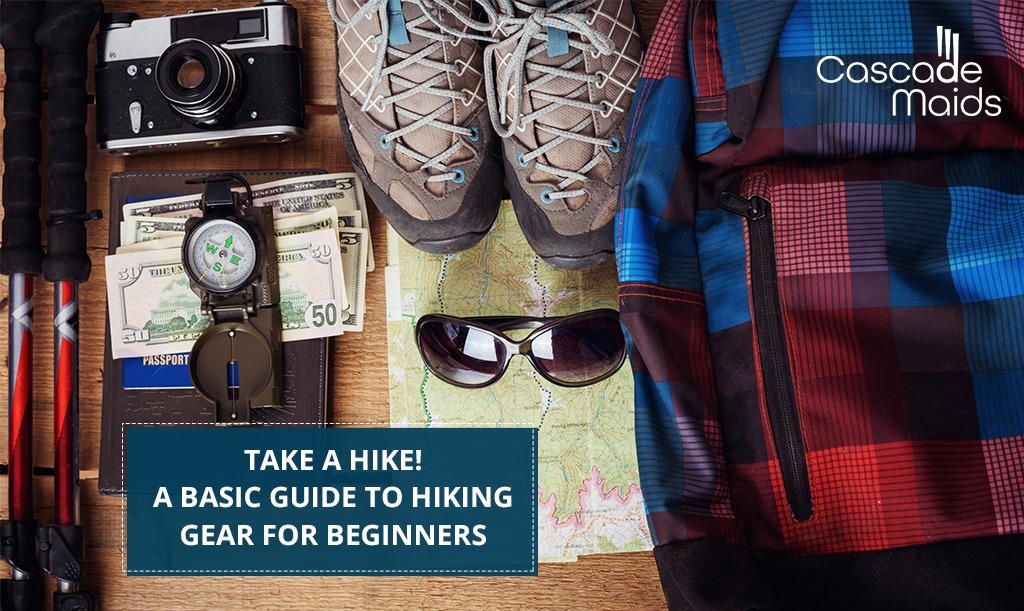Hiking is one of the most popular outdoor activities in the U.S., and that popularity has surged in the last decade, which means that more and more rookies are getting initiated into the planning and preparation that goes into a successful and enjoyable hike.
The Mountaineers, a Seattle-based organization for outdoor enthusiasts, created a list known as the Ten Essentials back in the 1930s to help beginners prepare themselves for everything in the outdoors. The list has evolved over the years and become a “system of systems”, so to speak. In this article we’ll go over the Ten Hiking Essentials for Beginners, and what each entails.
Navigation
Map
Take an up-to-date topographic map of the area where you’ll be hiking, no matter how easy to follow you think the path is. Mark the path down in your map, and of course, make sure you know how to read it.
Compass
A vital tool for any would-be adventurer, it’s always a good idea to carry a standard baseplate compass as a backup even if your electronic devices include one each.
GPS device
This will allow you to pinpoint your current location on a digital map. Be sure to pick a GPS device that’s designed for outdoor use so it’s waterproofed and somewhat resistant to damage.
Headlamp
It’s essential that you’re able to find your way around at every level of visibility, even if your plans are set only during the day. A headlamp is preferred because it follows your sight and leaves your body free to handle other tasks. Remember to get extra batteries for it.
Sun protection
Sunscreen
Walking around in the backcountry is fun and relaxing, but the exposure you get to UV rays is no game. Avoid sunburn, premature aging and melanoma by limiting your exposure to the sun with a powerful sunscreen, with an SPF of no lower than 30 for extended periods outside. Remember to apply over all exposed skin, not only on certain parts.
Sunglasses
The sun can also damage your eyes, so get a powerful pair of sunglasses, preferably ones that block both UVA and UVB rays, to avoid cataracts and other side-effects of exposure. Also, bring a spare in case anything happens to the ones you’re wearing. Use a hat as well.
First aid
Even if you get a pre-assembled first aid kit, its contents should always change depending on the number of people that will be coming on your trip and the area you’ll be hiking in. Basics should always be adhesive bandages, gauze, disinfectant, blister treatment, pain medication and some sort of guide on how to deal with medical emergencies.
Knife
There’s no way to overstate how useful knives are during an outing. From setting up camp to food preparation and first aid emergencies, every adult member in your hiking party should carry one. When not in use, always keep it holstered or folded, depending on the type you brought along.
Fire supplies
Either as part of the plan or as an emergency, you need a reliable way to start a fire when venturing outdoors. A butane lighter, some matches or even a flint and steel combo should never leave your backpack when heading out. If firewood is not available in your route, a stove is recommended.
Emergency shelter
If you’re stranded, waiting for help, or just waiting out some bad weather, an emergency shelter is a necessity you should always have at hand during a hike. An ultralight tarp, bivy sack or space blanket are good options because you need to be protected from the elements.
Food
Regardless of the planned length of your trip (and if you’re a beginner, you shouldn’t plan trips longer than a few hours for now), always bring an extra day’s worth of food. Pick items that don’t require cooking, like dried fruits, nuts, jerky, and energy bars.
Water
We’re not only talking about taking enough drinking water and an extra day’s ration, but a way to filter and purify water from natural sources in your route. Remember that dehydration is your worst enemy on trips of any length and difficulty, so avoid it at all cost.
Clothing
Be ready for things to turn wet, cold or windy, regardless of where you’re planning to go on a hike. This will save you from quite a few emergencies in the future. Think of what would better protect in over an extended period of inactivity while exposed to the elements; a jacket, layers of underwear, extra socks and gloves and insulated clothes if out on the cold.
Remember to start small and work your way up towards more complex and demanding outings, that way you’ll enjoy it more than if you push yourself too hard. Hiking can be a life-changing hobby for many, and after a few nights out you’ll come to appreciate your house a little more, so why not show it a little love while you’re outside?





